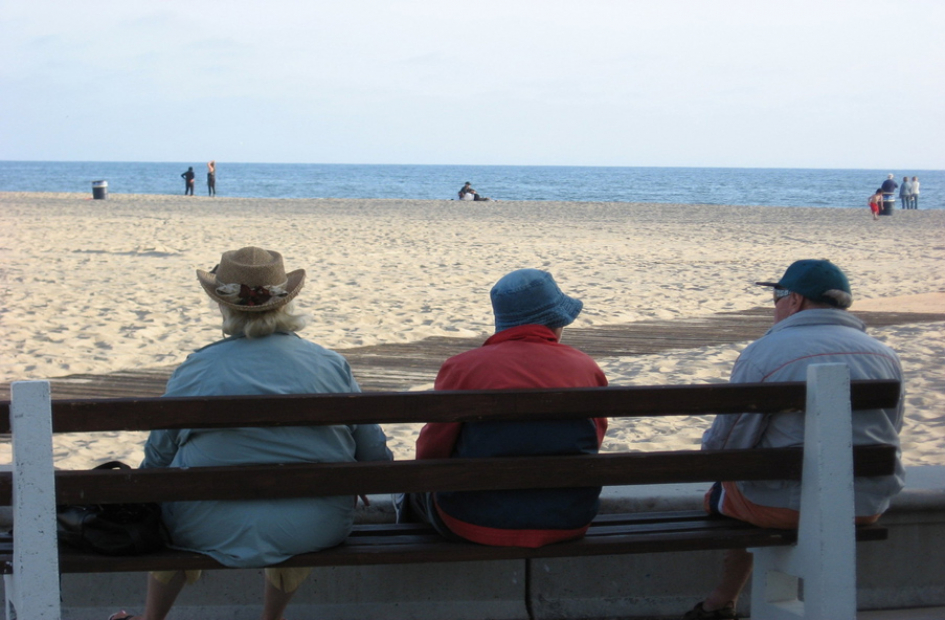News & Blog

Could Wearable Technology Enable Better Care of the Elderly?
By Francis West on 19th October 2016
Filed under: Blog
With wearables already helping to support healthier lifestyles, could they also be used to specifically foster healthy ageing and independent living, as well as monitoring the health of the elderly?
Ageing Population.
ONS figures show that by 2039, the number of UK people aged 75 and over could be 9.9 million and the number of people aged 85 and over is projected to more than double, reaching 3.6 million.
The rise in the average age of the population (and in the proportion of older people in the population) means that in the UK we certainly have an ageing population.
Similarly, in the United States, 13% of the population is over 65 today, and this figure is set to rise to nearly 20% by 2030. As well as being a new challenge for the countries across the developed world, this ageing population trend also represents a potentially lucrative untapped market for tech companies.
Smart Clothes.
One example that wearables could help seniors’ health is in the form of ‘smart clothes’.
Advances in nano-technology and the development of futuristic and lightweight threads that could have tiny circuits sewn into them have helped fuel predictions that medical applications will account for the largest share in this new textile market by 2021.
Examples of how smart clothes could help include:
- Clothes / watches / bracelets that remind people when to take their medication.
- Clothes that include technology to help seniors monitor and avoid complications from chronic conditions such as diabetes and heart disease.
- Wrist-worn devices to track blood pressure.
- Intelligent socks / footwear that can warn diabetics when they are at risk of foot ulcers. This is already being developed by a New Zealand startup, aided by the University of Nottingham.
- T-shirts that monitor the wearer’s stress levels and send vital signs to family members and doctors. These t-shirts which could help to prevent heart failure and seizures are already being developed by a Canadian company.
- Smart mobility aids such as white canes or clothing for the visually impaired that emit ultrasound waves and use sensors to detect obstacles and then send a warning signal (e.g. a vibration) to the user.
- A smart body-brace which can be used to reduce the number of falls in older people. The brace (which is already a product in development by a Washington based company) uses textile sensors to alert the user when they are about to lose their balance.
What Does This Mean For Your Business?
The ageing population could therefore, with the help of technology, represent a very real business opportunity.
The advances in nanotechnology and smart clothes and wearables could provide many different businesses with opportunities in different market segments within the senior age groups.

Could Wearable Technology Enable Better Care of the Elderly?
With wearables already helping to support healthier lifestyles, could they also be used to specifically foster healthy ageing and independent living, as well as monitoring the health of the elderly?
Ageing Population.
ONS figures show that by 2039, the number of UK people aged 75 and over could be 9.9 million and the number of people aged 85 and over is projected to more than double, reaching 3.6 million.
The rise in the average age of the population (and in the proportion of older people in the population) means that in the UK we certainly have an ageing population.
Similarly, in the United States, 13% of the population is over 65 today, and this figure is set to rise to nearly 20% by 2030. As well as being a new challenge for the countries across the developed world, this ageing population trend also represents a potentially lucrative untapped market for tech companies.
Smart Clothes.
One example that wearables could help seniors’ health is in the form of ‘smart clothes’.
Advances in nano-technology and the development of futuristic and lightweight threads that could have tiny circuits sewn into them have helped fuel predictions that medical applications will account for the largest share in this new textile market by 2021.
Examples of how smart clothes could help include:
- Clothes / watches / bracelets that remind people when to take their medication.
- Clothes that include technology to help seniors monitor and avoid complications from chronic conditions such as diabetes and heart disease.
- Wrist-worn devices to track blood pressure.
- Intelligent socks / footwear that can warn diabetics when they are at risk of foot ulcers. This is already being developed by a New Zealand startup, aided by the University of Nottingham.
- T-shirts that monitor the wearer’s stress levels and send vital signs to family members and doctors. These t-shirts which could help to prevent heart failure and seizures are already being developed by a Canadian company.
- Smart mobility aids such as white canes or clothing for the visually impaired that emit ultrasound waves and use sensors to detect obstacles and then send a warning signal (e.g. a vibration) to the user.
- A smart body-brace which can be used to reduce the number of falls in older people. The brace (which is already a product in development by a Washington based company) uses textile sensors to alert the user when they are about to lose their balance.
What Does This Mean For Your Business?
The ageing population could therefore, with the help of technology, represent a very real business opportunity.
The advances in nanotechnology and smart clothes and wearables could provide many different businesses with opportunities in different market segments within the senior age groups.
Comments